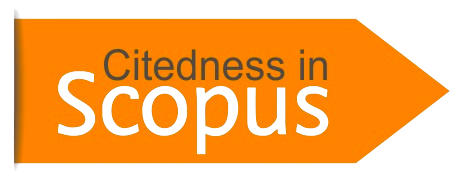HUBUNGAN ORIENTASI MASA DEPAN DALAM BIDANG PENDIDIKAN DENGAN KETERATURAN DIRI DALAM BELAJAR (SELF REGULATED LEARNING)
DOI:
https://doi.org/10.15575/psy.v1i1.2162Keywords:
Future orientation on education, self learning regulationsAbstract
Future orientation on education could be called as a goal; target, plan and strategy dreamed and strived by individual to achieve. One of many strategies could be used by student to make those dreams of their future on education to become true is to have self regulation in learning style and methods. In this research we can find out that future orientation on education has a significant positive correlation with self learning regulations.
References
Donald, Janet. (1997). Improving the Envi-ronment For Learning; Academic Leader Talk About What Works. San Francisco: Jossey-Bass Publishers.
Eaglin, Jan Collins.& Woodward, Laura. (2006). Self-Regulated Learning and its Role In Tutoring. Tutoring Institute Academic Succes Center: Http://www. success. wayne.edu.
Lapan, Richard T., Kardas, Carol Anne M.& Turner, Sherri. (2002). Empowering Student to Become Self Regulated Learners. Findarticle.com.
Nurmi, J.E. (1989a). Adolescents’ Orientation To The Future;Development of Interest and Plans, and Related Attributions and affect, in the Life-Span Context. Commentations Scientarium Socialium ’39. Helsinki Finland.
Nurmi, J.E. (1989b). Planning, motivation and evaluation in orientation to the future: A latent structure analysis. Scandinavian Journal of Psychology.
Nurmi, J.E. (1989c). Development of orient-tation to the future during early adolescence: A four-year longitudinal study and two cross-sectional compa-rison International Journal of Psy-chology 24.
Nurmi, J.E. (1991a). The Development Of Future Orientation In Life Span Context. Finland, University of Helsinki Depar-tement of psychology Research Reports No 13,15 s./p.
Nurmi, J.E. (1991b). How Do Adolescents See Their Future?A Review of the Deve-lopment of Future Orientation and Planning. Accademic Press.Inc.
Nurmi, J.E. & Pulliainen, Harry. (1991c). The Changing parent-child relationship, self esteem, and intelligence as determinants of orientation to the future during early adolescence. The Association for the Psychiatric Study of adolescence.
Nurmi, J.E. tt. Adolescent Development in an Age-graded Context: The Role of Personal Belief, Goals and Strategies in the Tackling of Developmental Tasks and Standars. International Journal of Behavioral Development.
Ruohotie, Pekka. (2002). Motivation and Self Regulation in Learning. In H.Niemi.& P.Ruohotie, Theoretical Understanding for Learning in the Virtual University (pp.37-70). http://www.uta.fi.
Schunk, Dale H. (2001). Self Regulation through Goal Setting. http://www.touret-tesyndrome.
Trommsdorf, Gisela. tt. Future Time Orien-tation and Its Relevance for Develop-ment as Action.
Trommsdorf, Gisela. (1983). Future Orien-tation And Socialization. Nort-Holland: International Journal of Psychology 18 (pp. 381-406).
Wolters, Christopher A. (1998). Self-Regulated Learning and College students Regu-lation of Motivation. Journal of Educa-tional Psychology. Volume 90. Issue: 2 In http://www.questia.com.
Zimmerman, Barry.J. & Kitsantas, Anastasia. (2005). The Hidden Dimension of Per-sonal Competence:Self Regulated Learn-ing and Practice. In Elliot, Andrew J.&Dweck, Carol S. 2005. Handbook of Comptence and Motivation. New York: The Guilford Press.
Zimmerman, Barry.J. (1989). A Social Cog-nitive Of Self Regulated Academic Learning. Journal of Educational Psy-chology.Vol.81:http://her.oxfordjournals.org.
Wahana Komputer. (2002). 10 Model Penelitian dan Pengolahannya dengan SPSS 10.01. Yogyakarta: Andi
Downloads
Published
Issue
Section
Citation Check
License
The author whose published manuscript approved the following provisions:
1. The right of publication of all material published in the journal / published on the E-Journal of Psychology website is held by the editorial board with the knowledge of the author (moral right remains the author of the script).
2. The formal legal provisions for access to digital articles of this electronic journal are subject to the terms of the Creative Commons Attribution-ShareAlike license (CC BY-SA), which means that the Journal of Psychology reserves the right to save, transmit media / format, manage in database form, , maintain, and publish articles without requesting permission from the Author as long as it continues to include the name of the Author as the owner of Copyright.
3. Printed and published print and electronic manuscripts are open access for any purposes. In addition to these objectives, the editorial board shall not be liable for violations of copyright law.
Â






